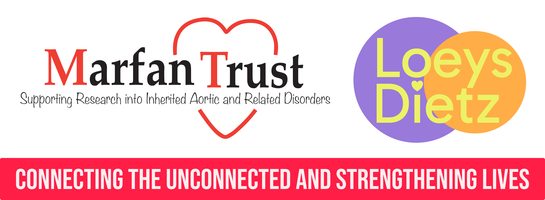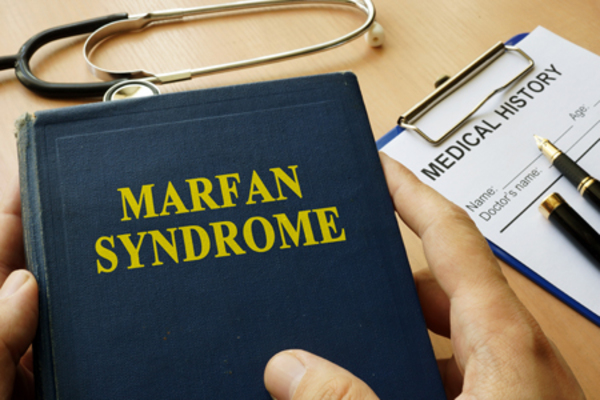Marfan syndrome is an inherited disorder of the body’s connective tissue that leads to medical problems affecting the heart, eyes and skeleton, requiring treatment to prevent life-threatening complications.
It affects men, women and children of any race or ethnic group. Over 18,000 people are affected by Marfan syndrome in the UK, and many of these are undiagnosed. It was identified in 1896 by French physician, Antoine Marfan.
View resources on Marfan Syndrome
Marfan syndrome and related conditions can shorten lives, especially if left untreated. They can also profoundly affect the quality of life of those coping with the conditions. As a result, it’s vital to get an appropriate diagnosis, learn about recommended treatments, and take special precautions for physical activity and other situations, like pregnancy, as soon as possible. For people with Marfan syndrome, certain activities are thought to increase the risk of some of the serious complications. See our Resources page for more information.
While living with Marfan syndrome requires numerous medical appointments, regular monitoring and tests, medical advances in the last 30 years mean you can live a long and productive life.
Who Has Marfan Syndrome?
About one in 3,000 people have Marfan syndrome in the UK. Most people with Marfan syndrome inherit it, i.e. they get the genetic mutation from a parent who has it. However, some people with Marfan syndrome are the first in their family to have it. This is called a spontaneous mutation. Each child of a parent with Marfan syndrome bears a 50% chance of inheriting the gene mutation and thus the condition.
People with Marfan syndrome are born with it, but features of the condition are not always immediately clear. Some people have a lot of Marfan features as a baby or as a young child; including serious conditions like aortic enlargement. While others have fewer features when they are young and don’t develop aortic enlargement or other signs of Marfan syndrome until they are adults. Some features of Marfan syndrome can also get worse over time, e.g. those affecting the heart and blood vessels, bones or joints. Both sexes can be affected equally.
This makes it crucial for people with Marfan syndrome and related conditions to receive accurate, early diagnosis and treatment as this ensures that they receive the best possible care. Ongoing advances in medicine ensure that people with Marfan syndrome are living longer and have a better quality of life with appropriate treatment and care. Without it, they can be at risk of potentially life-threatening complications. Generally, the earlier some treatments are started, the better the outcomes are likely to be.
Know the Signs of Marfan Syndrome
Knowing the signs of Marfan syndrome can therefore save lives. Experts in Marfan syndrome estimate that nearly half the people who have the condition don’t know it. This is something we are working hard to change by raising greater awareness. See our page which details the signs of Marfan syndrome.
For More Information, see:
- The Marfan syndrome section on our Resources page which has detailed information on being diagnosed and living with Marfan syndrome
- What is Marfan Syndrome by Dr Anne Child MD FRCP
- video below "Standing Tall - What is Marfan syndrome and the Marfan Trust" by Tyler Tapping and Cameron McGarry





